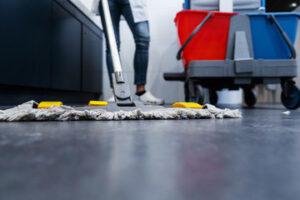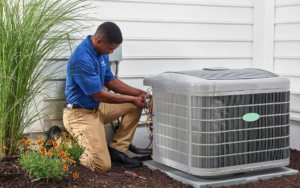Grease Trap maintenance is not just a regulatory requirement, but it offers economic and environmental benefits to your restaurant or commercial kitchen. Without proper cleaning and pump-out, FOG can back up into plumbing downstream and cause costly sewer line blockages. Regular grease trap maintenance prevents this from happening.
Do It Yourself

Obviously, the best way to clean your Grease Trap Perth is to hire a professional. Whether you are a restaurant owner or simply a property manager, having a qualified company do this job for you is a good idea because it will save you time and money in the long run. A reputable company will be able to come to your place of business at a time that works for you, and they can also help ensure your grease trap is compliant with state and local regulations.
The other option is to do it yourself, and for this you’ll need a few basic tools, including rubber gloves, metal scrapers and plastic buckets and scoops. The first step is to remove the grease trap lid and take a look. This is important because you will want to make sure the gaskets around the lid are intact and that there are no signs of damage or leaking.
Once you have removed the lid, start to clean the interior of the trap. This can be done by using a scrub brush to work on the walls and baffles of the trap, as well as on any other parts such as the inlet/outlet pipes. Once you are done cleaning, flush the trap with hot water to rinse away any cleaner and dislodged grease.
You should also check the grease trap for any leaks or cracks during this process, and if there are any, have a professional take a look at it as soon as possible. It is important to keep in mind that a grease trap should be cleaned and inspected regularly, usually every 60 to 90 days.
Aside from regular maintenance, you can also take steps to prevent problems in your grease trap by educating your staff. It’s important to make sure they understand that only sink drain waste should go into the trap, and that everything else should be poured down a different garbage disposal system or drain. Additionally, you can partner with a local service that recycles the used cooking oil you don’t use, which will further minimize your environmental impact.
Call a Professional
If you find yourself battling a grease trap clog, it may be time to call in the professionals. A specialized service company like Wind River Environmental can help you avoid expensive emergencies with scheduled grease trap services. These services include locating the grease trap, draining the trap, cleaning it thoroughly with hot water, testing, and properly disposing of the grease waste. Keeping your restaurant’s trap clean prevents the FOG from getting into other sewer lines, which can cause costly blockages in sinks and floors.
If your grease trap is not being cleaned regularly, it will eventually overflow. Overflows can lead to environmental violations and health hazards in addition to expensive plumbing repairs. They can also contribute to sewage backups that affect neighboring restaurants and homes. The rotten grease will attract pests and can create foul odors, especially when it is allowed to dry out.
Professionals can use line jetting to clean your trap and sewer system quickly. This process involves inserting a hose with powerful jets that pushes water in a circular motion. This method removes grease and other debris from your pipes, restoring them to their original condition. Professionals can also install a new grease trap that meets the government’s minimum requirements.
Grease traps must be pumped out whenever they reach a quarter of their capacity. This is a mandatory step that must be done by law. If you don’t do it yourself, you could face expensive fines from the city.
Regular maintenance can reduce the frequency of grease trap pumping. In many cases, you can go up to three or four weeks between grease trap cleanings with proper maintenance. It is also a good idea to educate your employees about proper waste disposal practices. This will prevent fats, oils, and grease from entering the trap in the first place.
Don’t be fooled by products that claim to break down grease. Most of these products do not actually work and can be harmful to the environment. Many of them are also toxic to the natural bacteria that lives in a grease trap, so they can actually contribute to a clogged system.
Schedule a Service Call
The best way to keep your traps clean and functioning well is to hire a licensed plumber who knows the city’s regulations regarding grease trap maintenance. The professional will also understand how to use the proper tools to empty and pump your trap. A professional will have a high-quality truck and specialized equipment to dispose of the waste safely and legally in accordance with your city’s guidelines.
Having your restaurant’s grease interceptor properly cleaned on a regular basis keeps solids, oil and FOGs from building up and causing blockages in your drain lines. It also helps to prevent the build-up of odors. Regular cleaning of your traps reduces the risk of costly backups and overflows, as well as preventing the need for expensive repairs or fines from local inspectors.
One of the most obvious signs that your restaurant’s grease trap needs to be cleaned is a foul odor emanating from the kitchen. When food waste, fats and oils build up in your traps they decompose and release sulfuric gases. These odors can be a health hazard for your employees and customers and can create unpleasant conditions in your establishment.
A good rule of thumb is to have your traps emptied once they reach a quarter full. However, this depends on the size of your restaurant and how much you serve. A large volume of food can fill the trap in a very short period, so it’s best to have your traps pumped more often to avoid overflows and other problems.
In addition to having your grease interceptors regularly pumped out, have a professional inspect them on a regular basis. The inspector will check the metal fittings that control water flow and make sure they are not corroded. They will also make sure the flow control valve is properly vented to allow air to mix with the wastewater, thereby increasing the separation efficiency of the traps. They will also check the grating and baffles for any noticeable damage that may require attention by a plumber.
Finally, the professional will take a sample of the contents of your grease trap and provide you with a copy of the report. Some cities require this as evidence that your grease was removed and disposed of in compliance with local laws.
Schedule an Inspection
It’s important to have your grease traps inspected on a regular basis. This helps to ensure that the trap is clean and that the kitchen staff is trained properly in how to use and operate the grease trap. Regular inspections will also help you stay in compliance with local regulations and avoid fines.
In addition to ensuring that your trap is clean, it’s vitally important to get it pumped regularly. The best way to do this is to hire a professional. A professional service technician will remove the grease and solids from your trap, scrape the sides, and measure the contents to determine how much FOG has accumulated since the last cleaning. If the trap is more than 25% full, it’s time to have it pumped out.
Aside from assessing the cleanliness of your trap, an inspector will check the size and capacity to make sure it is appropriate for your establishment’s volume of wastewater. He or she will also check for proper ventilation, as this is important to avoid odors. The inspector will also look at your maintenance and cleaning records to make sure you’re up to date on your required schedule.
Foul odors coming from the drains are an indication that you need to have your grease trap cleaned. The smells are caused by the accumulation of food waste and grease in the trap. If you don’t get the trap cleaned in time, it could cause clogs and backups, which can damage your pipes and sewage system.
FOG (fats, oils, and grease) that enters the sewer system cools, solidifies, and sticks to the inside of the pipes. This buildup obstructs the flow of wastewater and causes sewage to back up into restaurants and homes. A well-operated grease trap will separate and retain FOG from the wastewater, keeping it out of the sewer lines. It’s essential to have the right size and type of grease trap for your establishment and to follow a strict cleaning and servicing schedule. Failure to do this can lead to a host of problems, including clogged drains and sinks, foul odors, and obstructive blockages in the sewer line that can span entire city blocks.








